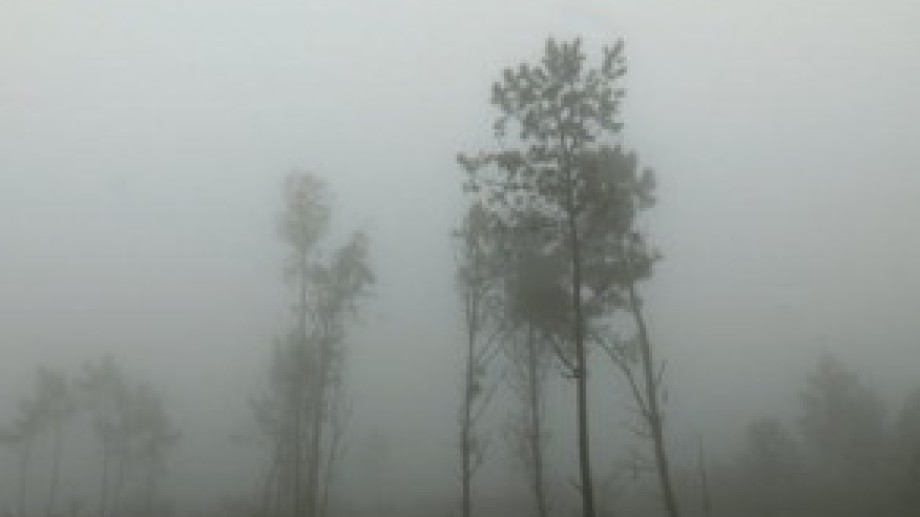
The ominous, alluring, and often dangerous beauty of nature is on full display in Costa da Morte (Coast of Death), a new feature-length film from director Lois Patiño that played at the Locarno Film Festival. Screening tonight and tomorrow in Program 3 of Views From the Avant-Garde, the film's title is derived from the all-too-real Coast of Death in Galicia, Spain.
Death, represented in numerous ways throughout, first makes its presence known in the film's opening shot. We are placed in a forest succumb to fog as men get to work sawing down gigantic trees looming above, their electrical chainsaws giving off a powerful hum. As the forest is wiped out tree-by-tree, trucks roam by to collect and stack the logs; their victims have been exterminated in mass thanks to tools of technology. The title card subsequently arrives and we switch gears, as Patiño drops us into a new location: Costa da Morte, the most unsettling and intimidating on-screen body of water since Martin Scorsese's Shutter Island three years ago.
Possessing a very palpable sense of deathly history, Costa da Morte is a film about stories from the past. The setting typically overcast, Patiño films his characters from a distance in long shots—their faces are rarely, if ever, seen—as they discuss the Coast's various casualties. Many fishermen were once fooled into being shipwrecked, as they saw a light from afar, thought it was land, crashed and were looted by residents. At one point in the film, two women discuss all the goods they've collected from the unfortunate outcomes of sunken ships—the goods they were carrying consistently washed up on shore—and in another, two fishermen discuss how politicians' use of oil and gas are killing the inhabitants of the sea.
In a sequence representing, perhaps, the death of the Earth, two men hiking up a mountain peacefully discuss forest fires (a recurring issue in the film) and the history of specific stones. We then see many of these stones blown to smithereens, the rubble being demolished into sand; ancient stone architecture is destroyed before our very eyes. Later, we see hunters spread out over a forest with their trusty canines in tow, as the sounds of crows (again indicating death) alert them to the whereabouts of their fallen prey.

Death is always lurking nearby and is best indicated in a shot of a lifeless body lying face down in the ocean. How it got there is anyone's guess, but where it's going isn't hard to see. Costa da Morte accepts this circumstance as a fact of life, and thus becomes a peaceful meditation on the acceptance of eventual expiration.
Reporting for Slant Magazine, Michael Pattison noted, “Lois Patiño won the Best Emerging Director Award following the world premiere of his feature-length debut, Costa da Morte. Named after the Galician coastline on which it was filmed, this essay film flattens both history and landscape with some wonderful digital photography. Midway through, it pays brief homage to James Benning's Casting a Glance (2007) with a becalming sequence in which the water levels of a canal go up and down and up again.”
Costa da Morte
Director: Lois Patiño
Section: Views from the Avant-Garde
Screens: October 3 + 4
NYFF Official Description:
Costa da Morte is a region in Galicia (Spain), which was considered as the end of the world during the Roman period. Its dramatic name comes from the numerous shipwrecks that happened along history in this area made of rocks, mist and storms. We cross this land observing the people who inhabit it, fishermen, gatherers of shellfish, loggers… We witness traditional craftsmen who maintain both an intimate relationship and an antagonistic battle with the vastness of this territory. The wind, the stones, the sea, the fire, are characters in this film, and through them we approach the mystery of the landscape, understanding it as a unified ensemble with man, his history and legends.



